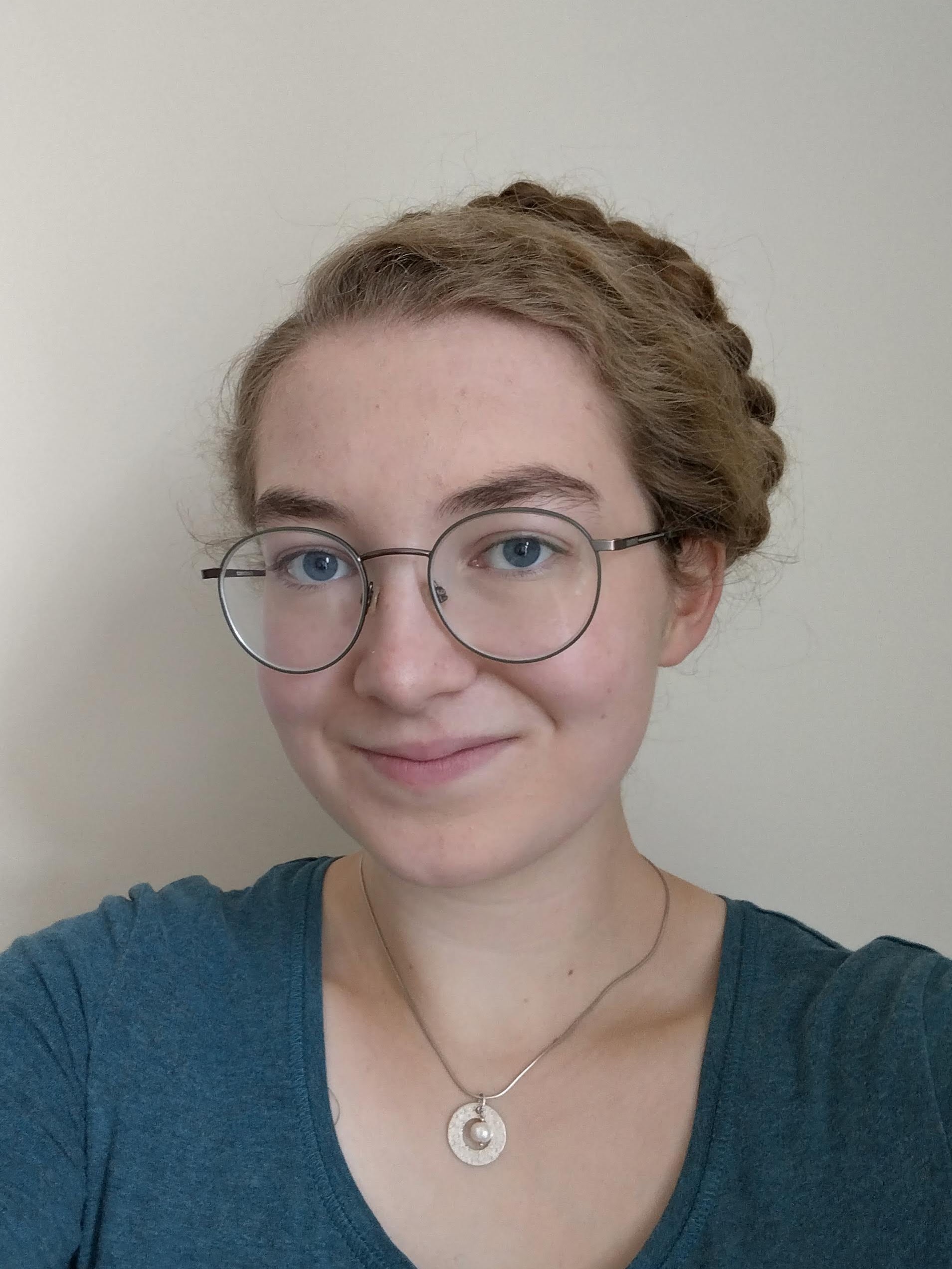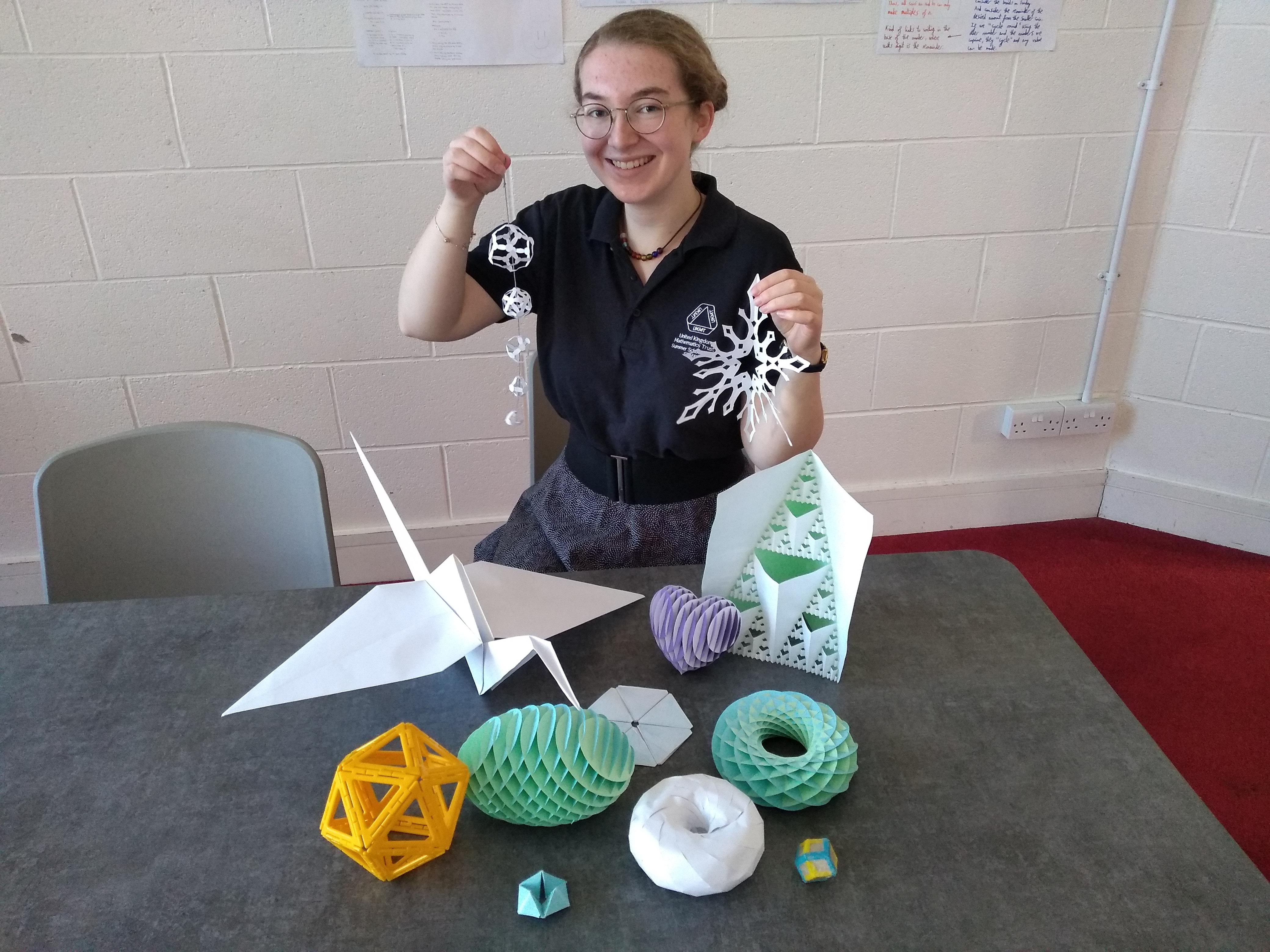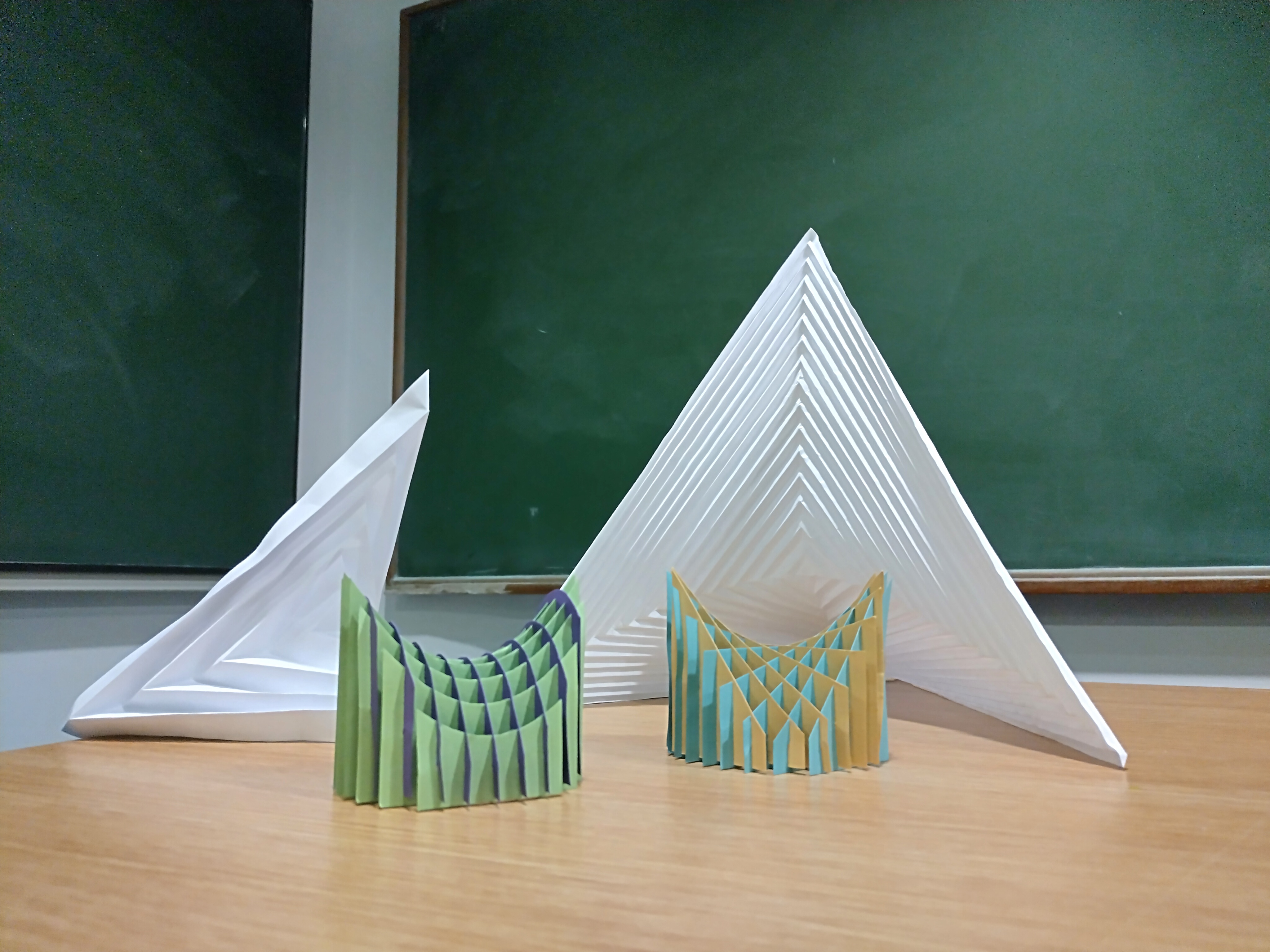Laura Bradby

Contact: laura.bradby (at) warwick.ac.uk
Hi! I'm Laura, a first year PhD student studying geometric analysis. My supervisors are Felix Schulze and Peter Topping.
Fellow academics: See the sections immediately below.
Anyone else: Scroll down for fun mathematical crafts, a bit about what geometric analysis is, and more!
Essays
How ‘big’ is the moduli space of Riemann surfaces? - Third year “extended essay”, supervised by Jason Lotay. I gave a talk based on this essay on 29th November 2023.
On the regularity for elliptic equations, elliptic systems and harmonic maps - Fourth year dissertation, supervised by Luc Nguyen.
Talks
If I made a list of every doughnut, would it be compact? - Postgraduate seminar, University of Warwick, 29th November 2023
Teaching
MA3G8 Functional analysis II - Teaching assistant, Term 2, 23/24
Committees
SGSLCLink opens in a new window (Staff - Graduate Student Liaison Committee) - 1st year representative, Terms 1, 2 and 3, 23/24
Teaching committee - Member, Terms 2 and 3, 23/24
About me
I grew up in North Yorkshire, at the foot of the Yorkshire Dales (famous for beautiful countryside and Wensleydale cheese). I completed an integrated master's degree at the University of Oxford, and went on to swap the dreaming tower cranes of Oxford for the dreaming geese of Warwick, where I am currently studying.
I was born with a rare birth defect (OA/TOF). I am very grateful to the charity TOFS for their support, and their campaigning for the NHS to introduce lifelong follow-up for this lifelong condition.
Outreach
I've been a volunteer with the UK Maths Trust since 2020, having previously been involved as a school student. They are probably best known for running the "maths challenges" (fun multiple-choice tests, which many UK schools take part in each year), but the activities I principally volunteer in are the mentoring scheme, and the national mathematics summer schools.
The mentoring scheme is aimed at helping individual school students to develop their mathematical skills over time, through completing monthly problem sheets and receiving personalised feedback. When I was a student, the mentoring scheme gave me the closest experience to university problem sheets that I had while still in school (and I was doing them for fun!), and as a mentor on that scheme now, I have the immense privilege of seeing young mathematicians flourish in their problem-solving and communication skills.
At the national mathematics summer schools, I work alongside other volunteers with a group of older school students. Over the course of a week we run a variety of sessions, with the aim of showcasing many different areas of maths, placing an emphasis on working collaboratively. I have been pastoral lead for a summer school on two occasions.
I highly recommend volunteering with the UKMT - they have a variety of opportunities available, including both one-off events and ongoing roles, and with many different commitment levels. I would be very happy to talk to anyone who's interested in learning more about volunteering with them, and anyone who'd like to can sign up as a volunteer on their website.
When I was at Oxford, I took part in outreach with my college to help spread the message that anyone can go to university, and that anyone from any background is welcome at Oxford! This is especially important to me, because I grew up with the attitude that Oxford wasn't for state-educated northerners like me, and only changed my mind after visiting for a summer school. As part of this, I have done some school visits, including two to a primary school where I taught a fun maths lesson about the Bridges of Königsberg problem.
Mathematical crafts
Here's a list of some of my favourite mathematical crafts! Some are harder than others, so I've given each craft a difficulty rating from the following scale: 0 = Nice and simple, good to do with children; 1 = Doable by an older teen or adult in an evening or less; 2 = Not too difficult, but very time-consuming; 3 = Time-consuming and surprisingly tricky.
For crafts which were created by me, I’m releasing the files for personal use, or use in schools (and similar educational settings). If you’d like to use them for anything else, please get in touch - if it’s something cool then I’d be excited to hear about it! I can also provide svg files (for use in paper cutting machines) upon request.
Laura’s mystery worksheet (1), and similar crafts (1-2) - Made by me! Mystery worksheet has no instructions, because you have to figure it out for yourself! Once you’ve tried it, have a go at "craft with redacted name" (similar difficulty) and "another craft with redacted name" (extreme difficulty). (Note the filenames of the second and third crafts are spoilers for the first one.)
Paper snowflakes (0) - True mathematicians only make snowflakes with the correct symmetry! To learn how to do that, check out this ViHart video.
Hypar (0-1) - Make an approximation of a hyperbolic paraboloid! You can add more folds in the horizontal and vertical directions to get a more detailed model, but this will make it harder to manipulate the model. Hypar instructions can be found here.
A torus (3) - This template for a torus is very involved, and comes from CutOutFoldUp, a website with some other very cool maths crafts on it. Warning: If you do make this, don’t try to have the tape and guidelines on the inside. It doesn’t end well.
Another torus (2-3) - This torus is a sliceform (see below), and also takes a while. The results are great though! Be sure to follow the instructions on the website when making this, as the final construction is challenging.
An ellipsoid sliceform (2) - This ellipsoid is made entirely from circles!
Other sliceforms (2) - Here are some other templates for sliceforms, which I made myself. You can make a cute 3D heart, or a pair of hyperbolic paraboloids (which fit together very nicely). I made these sliceforms using MATLAB and Inkscape - if you'd like to chat about how I did this, then do get in touch.
Weave a catenoid (2) - Make your very own minimal surface! Once you’ve made one of these, you can pull on the middle of each of the short edges to turn your catenoid into a helicoid. For pictures of this process, and two other surfaces you can weave, see the ‘results’ section of this paper, which is also linked at the webpage given above.
Fractal cards (0) - Fun and relatively straightforward. Instructions for fractal cards can be found here.
Flexagons (0-1) - A classic mathematical craft! I recommend checking out this playlist of videos by ViHart (0) about flexagons, including a tutorial, a bit of the history of flexigation, and some interesting food-related ideas. If you want to see just how many flexagons there are, then flexagon.net (0-1) is a good place. And if you want to try making your first flexagon, then this page about the trihexaflexagon (0) has good instructions and templates. Then this page about the hexahexaflexagon (1) is the best place to go for your second flexagon!
Flexahedron (0) - Like a flexagon, but 3D! These have a bit more of a tendency to fall apart over time, but are still cool. I like these flexahedron instructions.
Origami (0-3) - This is a very classic craft. There are lots of instructions online for the most popular models (eg water bomb, crane, boat), but I also like the origami animals on the WWF site (0-1) and all of these origami dinosaurs (1-2). (Note: some of the dinosaurs are very difficult to make.)

Showing off some maths crafts at a UK Maths Trust summer school. Here you can see many of the mathematical crafts linked in this section, including (L-R): Some origami, an ellipsoid sliceform, a flexahedron, a flexagon, a torus, a heart-shaped sliceform, a mathematically accurate snowflake, a fractal card, and a toroidal sliceform.

A celebration of the hyperbolic paraboloid! Two hypars, and two hyperbolic paraboloid sliceforms which fit together.
What is geometric analysis?
Some mathematicians are interested in studying curved surfaces, and their higher dimensional equivalents (called manifolds). The infinite plane, the surface of a sphere, and the surface of a doughnut (a torus) are all examples of surfaces, that is two-dimensional manifolds. Then lines and curves are examples of one-dimensional manifolds, and the 3D space we live in is an example of a three-dimensional manifold (unless, like some physicists, you want to include time, in which case we live in a four-dimensional manifold). This area of study is part of geometry.
Other mathematicians are interested in studying partial differential equations. If you've seen derivatives, then these are equations involving a function and its (partial) derivatives, but if you haven't seen derivatives, then you can think of these as being like equations you see in school (something like 6x²+42-√x=sin(x)), but where the "answer" is a function instead of just a number. In practice, actually solving these equations like this is pretty much impossible, so instead these mathematicians ask questions like: Is there a solution? If so, could there possibly be more than one? This area of study is part of analysis.
And other mathematicians like to smash the two things together, and study geometric analysis! By doing this, we can use powerful tools from each area of study to learn things about the other one. For example, you could think about solving equations where instead of the solution being a function, it's a manifold that changes over time. If you'd like to see what this could look like in the case of one-dimensional manifolds, you can play with an example in this interactive applet. This area of study is geometric analysis.
